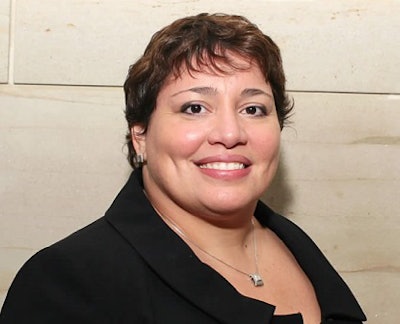 Excelencia co-founder Deborah Santiago says “the number of institutions that meet the enrollment criteria has been increasing every year since 1995.”
Excelencia co-founder Deborah Santiago says “the number of institutions that meet the enrollment criteria has been increasing every year since 1995.”
In 2011-12, HSIs, which include 169 four-year institutions and 187 two-year institutions, enrolled 1,480,722, or 56 percent of, Latino undergraduate and graduate students, according to the organizations which annually collaborate to publish HSI fact sheets on their respective websites.
“Our (HIS) lists are identical,” says Deborah Santiago, the co-founder and vice president for policy and research at the Excelencia in Education advocacy organization. Excelencia, which seeks Latino student success in American higher education with research and advocacy, posted the HSI data last week.
The HSI lists are created annually by the organizations using data from the Integrated Postsecondary Education Data System (IPEDS) from the U.S. Education Department. The Hispanic Association of Colleges and Universities (HACU), a membership organization, represents and lobbies on behalf of HSIs in Washington.
“We released our HSI list in March, and it’s the same list of institutions as Excelencia because we follow the same methodology. One of the things we wanted to ensure is that whether a person goes to HACU’s or Excelencia’s website he or she would have the same list,” says Emily Calderon Galdeano, the HACU director of research and information.
Additionally, the U.S. Education Department maintains its own category of HSIs, which are eligible to compete for Title V education funding. Title V eligibility requires meeting “criteria beyond enrollment,” Santiago says.
“The list we create is focused on enrollment. … Therefore the number of institutions that meet the enrollment criteria has been increasing every year since 1995,” she explains.
Other 2013 HSI data highlights include:
1) HSIs represent 10.5% of non-profit colleges and universities, yet enroll 17% of all students in postsecondary (non-profit) schools, and serve 56% of all Hispanic students;
2) HSIs receive 66 cents for every dollar going to all other colleges and universities annually, per student, from all federal funding sources;
3) The number of HSIs is rapidly growing, from 137 institutions in 1990 to 172 in 1995, to 230 in 2000, to 253 in 2005, and 356 in 2011;
4) Of the 356 HSIs in 2011-12, 169 (47.5%) were public two-year institutions, 70 public four-year institutions, 99 private four-year institutions, and 18 private two-year institutions.
Santiago noted that news about Latino college enrollment has been prominent. Just last month the Pew Hispanic Center, a division of the Washington-based Pew Research Center, reported that 69 percent of Latino high school graduates in the class of 2012 enrolled in college compared to 67 percent of Whites, a jump from 49 percent of Latinos graduating in 2000.
“Just as people are thinking about Hispanic enrollment, with the recent Pew Hispanic Center study that came out, commensurate with that is the growth of the number of HSIs, she said.
“To me, the critical point here is that in one year the number of institutions that met enrollment criteria grew by the largest number since HSIs were defined … and that’s a significant increase,” Santiago noted.
Eric Felix, an admissions counselor at the University of San Diego, said he’s followed the HSI fact sheet data for several years to stay abreast of the institutions that are gaining recognition as HSIs. A graduate of an HSI, California State University-Fullerton, Felix plans to become an education professor and will be enrolling at the Urban Education Policy program at the University of southern California as a doctoral student.
“My research is going to focus on the education of young males of color and the HSI data is useful for tracking where many first-generation Latino college students are attending school,” Felix said.















